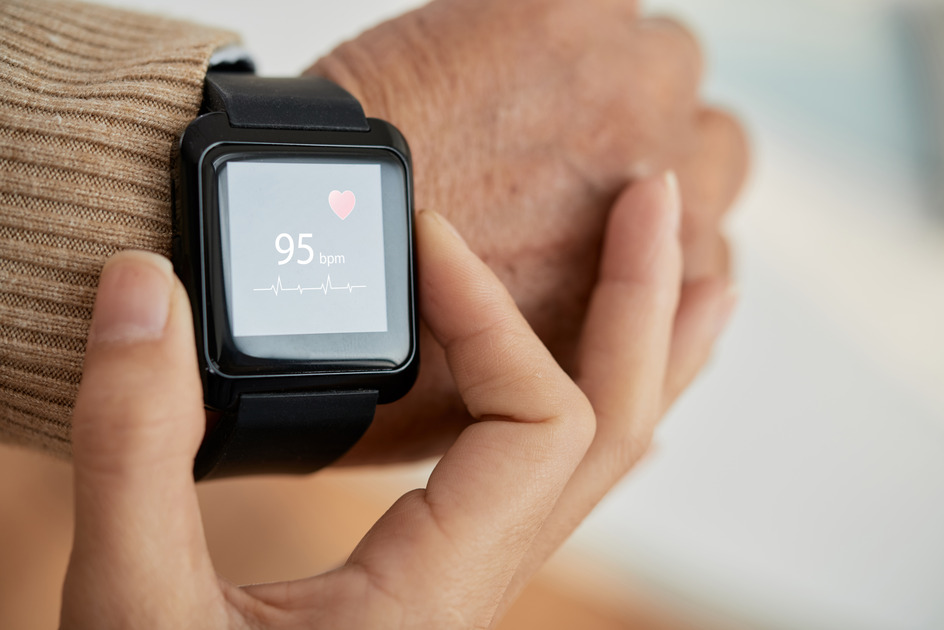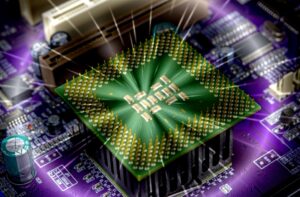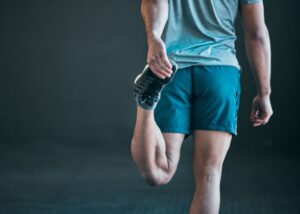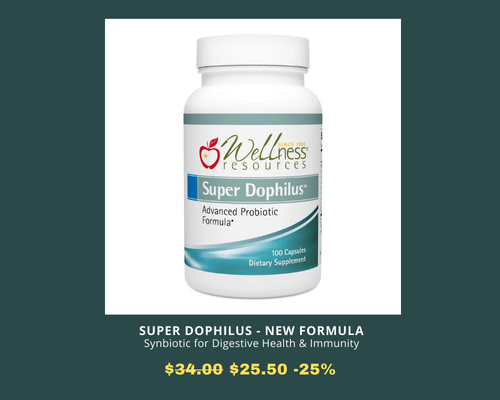What if your smartwatch could warn you that you’re getting sick before you even notice any symptoms? This isn’t science fiction – it’s happening now. Wearable devices that started as simple fitness trackers have evolved into personal health guardians capable of detecting early signs of illness. In this article, we’ll explore how today’s wearables (from popular gadgets like the Apple Watch and Oura Ring to cutting-edge research prototypes) can act as early warning systems for your health. We’ll cover how they work, what illnesses they can help spot, and how you can use them to stay one step ahead, all in an engaging and accessible way.
From Fitness Tracker to Health Guardian
In recent years, wearables have rapidly grown in popularity and sophistication. About 1 in 3 Americans now wear a fitness tracker or smartwatch – a number that keeps rising scripps.edu. These devices still count steps, but they also continuously measure key health indicators like heart rate, sleep quality, activity levels, and even blood oxygen and temperature. Crucially, changes in these measurements can signal that something is off in your body. As one scientist explains, “When people get an infection, their resting heart rate tends to increase and their daily activities will change, as will sleep patterns.”scripps.edu In other words, your wearable can notice your heart beating faster or your sleep getting restless – potential red flags that your body is fighting an illness, even if you feel fine. By leveraging tech many of us already use, these health clues can be spotted faster and more precisely.
Key Takeaway: Modern wearables are no longer just pedometers. They are sophisticated health monitors that track your vital signs and habits 24/7. When those stats stray from your normal baseline, it could be an early warning of illness. This shift from fitness to health guardian is empowering individuals to catch potential health issues sooner.
How Wearable Tech Senses Trouble
How exactly can a watch or ring tell if you might be getting sick? The secret lies in the physiological signals they measure. Wearables continuously collect data on your body, and certain biometric patterns are known to change when illness is brewing. Here are some of the crucial signals wearables monitor and what they can mean:
- Resting Heart Rate (RHR): This is your heart rate when you’re calm and at rest. Normally, it’s fairly steady. But if you’re coming down with an infection, your resting heart rate often goes up as your body mounts a defense. Studies show that elevated RHR is an early indicator of viral infection, often rising days before you notice symptoms nature.com. For example, Fitbit data analyses have found people’s RHR spikes prior to flu-like illness.
- Heart Rate Variability (HRV): HRV measures the tiny time differences between heartbeats; it reflects how well your nervous system is balancing stress and recovery. A higher HRV generally means you’re well-rested and resilient. When you’re getting sick (or very stressed), HRV typically drops. In fact, an Apple Watch study found that subtle drops in HRV signaled COVID-19 infection up to 7 days before diagnosis, mountsinai.org! Lower HRV is a red flag that your body is under strain, possibly fighting an infection.
- Body Temperature: Many wearables (like the Oura Ring and some smartwatches) measure skin temperature or have thermometers. A spike in your baseline temperature can indicate a fever. Continuous temperature tracking is far more sensitive than a one-time check. In one study of 65,000 people, an Oura Ring’s continuous temperature sensor detected the onset of fevers (a key COVID-19 and flu symptom) before participants noticed anything wrong. In fact, changes in nighttime skin temperature have predicted infection around 2-3 days early on average.
- Breathing Rate: Your respiratory rate (breaths per minute) can increase when your body is fighting an illness (even before a cough starts). Research using devices like the WHOOP strap and medical-grade BioButton patch found that abnormal nighttime breathing rates often appeared in the pre-symptomatic phase of COVID-19. An unexplained uptick in your breathing rate can be a tip-off that your immune system is working overtime.
- Sleep and Activity Patterns: Ever felt wiped out at the very start of a cold? Wearables can quantify that. A sudden drop in your daily step count or an increase in hours slept could be your body conserving energy to fight an infection. For example, if your tracker shows you slept 10 hours and still felt tired (when you usually sleep 7 hours), or your steps plummet, it might not just be laziness – it could be your body’s early SOS. These changes have been used to flag illness in studies, sometimes even guiding people to get tested for COVID-19 sooner, nature.com.
Pro Tip: To get the most from these metrics, establish your personal baseline when you’re healthy. Know your typical resting heart rate, HRV, sleep pattern, etc. That way, if your wearable suddenly reports “unusual” stats (even if they’re still in a “normal” range generally), you’ll recognize that something is off for you. Your normal is unique – and that’s what your device can compare against to send up a flare when needed.
Wearables on the Market: What They Can Detect
The good news is you don’t need a lab or a hospital to get these early warnings – you can get them on your wrist, finger, or even sewn into your shirt. Here are some of the leading wearables and what health insights they offer:
- Apple Watch (and other Smartwatches): The Apple Watch is practically a medical device on your wrist. It can take an FDA-cleared electrocardiogram (ECG) to detect atrial fibrillation (an often-silent heart rhythm disorder) and will alert you if it detects an irregular pulse. In a 400,000-person study by Stanford, the Apple Watch’s algorithm identified irregular heart rhythms that were later confirmed as atrial fibrillation in 84% of cases – a serious condition that often goes undiagnosed until a stroke happens, med.stanford.edu. Newer smartwatches (Apple, Samsung, Fitbit Sense, Garmin) also track blood oxygen saturation (helpful for flagging breathing issues or sleep apnea risk) and even have fall detection and emergency SOS features (more accidents than illness, but still health-related). And yes, some can measure skin temperature – the Apple Watch Series 8+, for instance, tracks nightly temperature shifts (intended for cycle tracking, but also potentially useful to see a brewing fever). Samsung and others are exploring blood pressure monitoring from the wrist as well.
- Fitbit, Garmin & Other Fitness Bands: These popular fitness trackers monitor heart rate 24/7, sleep stages, and activity. They might not have ECGs or fancy displays, but they are very adept at establishing your health baseline and nudging you when you deviate. Fitbits have been used in research to successfully detect influenza trends and individual infections by spotting spikes in resting heart rate coupled with poor sleep. Many Fitbits and Garmins also estimate stress levels and can prompt you to relax if your body’s stress signals (like HRV) look concerning.
- Oura Ring & Smart Rings: The Ōura Ring is a small ring packed with sensors that track your pulse, temperature, HRV, respiration, and sleep quality. It’s especially known for its accuracy in tracking nighttime body temperature and heart rate variability. Oura’s claim to fame is giving you a “readiness” score each morning – essentially telling you if your body is under stress or primed to perform. Users and studies report that a sudden dip in the readiness score (for example, due to elevated temperature and lowered HRV) often alerted them to an oncoming illness, even when they felt fine. This ring helped predict COVID-19 cases in a study days in advance by catching fever and HRV changes. Other smart rings (like the Motiv or Circular rings) and upcoming ones offer similar tracking, proving you don’t need a watch to keep tabs on your health.
- WHOOP Strap: Favored by athletes, the WHOOP is a screenless strap worn on the wrist (or arm) that focuses on recovery, strain, and sleep metrics. It tracks HRV, RHR, respiratory rate, and sleep depth, distilling them into a daily recovery score. WHOOP users often find out they’re getting sick when their recovery score tanks. For instance, pro golfer Scott Stallings famously noticed his WHOOP data (HRV plummeting ~40%, heart rate and breathing rate spiking) looked totally off – prompting a COVID test that turned out positive, even though he felt okay at first, forbes.com. WHOOP’s data science team reported that about 80% of symptomatic COVID cases could be identified just by changes in breathing rate and HRV, before symptoms hit whoop.com. In short, WHOOP is like having a coach whispering, “Take it easy, you’re run down – something might be up.”
- Medical-Grade Wearables: Beyond consumer gadgets, there are FDA-approved or clinical wearables designed explicitly for health monitoring. For example, the Omron HeartGuide is a smartwatch with an actual inflatable cuff to measure blood pressure, allowing hypertensive patients to catch high BP readings early at home. Continuous glucose monitors (CGMs) like the Dexcom G7 or Freestyle Libre (worn on the arm or belly) constantly measure blood sugar, which is life-saving for diabetics and can alert to dangerous highs/lows early. They’re now even used by fitness enthusiasts to monitor diet impacts. Wearable ECG patches (like Zio Patch) can be prescribed to catch elusive heart rhythm problems over weeks. And startups have developed things like the BioIntelliSense BioButton, a Band-Aid-like smart patch that sticks to your chest and continuously monitors vital signs (skin temperature, breathing, heart rate) for 90 days – used in hospitals to catch fevers or pneumonia early in discharged patients.
- Specialized Health Wearables: There are also niche devices for specific conditions. For example, the Empatica Embrace watch monitors skin conductance and motion to detect epileptic seizures and alert caregivers immediately. Smart inhalers and asthma wearables can warn of an approaching asthma attack by tracking subtle changes in breathing patterns. Wearable air quality sensors can warn those with allergies or respiratory issues about environmental triggers in real time. The list goes on – if there’s a health need, chances are there’s a wearable either already on the market or in development to address it.
Early Illness Detection in Action
Nothing drives the point home better than real-world examples. So let’s look at how wearables have already caught illnesses early or helped manage health threats:
An Air Force service member wearing a smartwatch as part of the U.S. military’s RATE program, which uses wearables and AI to detect illnesses like COVID-19 in advance. In 2020, the U.S. Department of Defense launched a program called Rapid Assessment of Threat Exposure (RATE) to see if wearables could keep troops healthier. The results were astounding: using off-the-shelf gadgets (like Garmin watches and Oura rings) and a smart AI algorithm, the military was able to predict infections up to 48 hours before symptoms, and in some cases up to 6 days early, even for asymptomatic cases. Imagine knowing days in advance that you’re coming down with something – you could isolate early or start treatment sooner. This kind of capability is a game-changer for stopping outbreaks and maintaining readiness, and it underscores just how powerful the data from wearables can be.
Closer to home, during the COVID-19 pandemic, researchers and clinicians turned to wearables for help in early detection. Mount Sinai’s “Warrior Watch” study with healthcare workers found that Apple Watch measurements could flag COVID-19 a full week before a PCR nasal swab confirmed the diagnosis. The key indicator was HRV – the watch noticed the workers’ HRV patterns were off baseline, indicating stress on the body, days before they felt sick or tested positive. Similarly, Stanford and Scripps Research ran studies where simple Fitbit or Apple Watch data (heart rate, sleep, activity) identified people who were falling ill with COVID-19 days in advance by detecting that signature rise in resting heart rate and drop in activity.
Another fascinating example: the Oura Ring’s role in illness detection. In a large study called TemPredict, over 60,000 people wore Oura rings and allowed researchers to analyze their data. The ring’s continuous temperature sensor, coupled with heart rate and breathing data, could detect COVID-19 on average 2.75 days before people went for a test. In many cases, the wearers felt normal, but the ring saw the telltale fever pattern at night that even the people themselves didn’t notice yet. This study even found that some “asymptomatic” individuals actually had unrecognized fever spikes – meaning wearables can reveal illness signs that otherwise fly under the radar. Identifying those hidden fevers is huge for diseases like COVID-19 or flu, where people might spread the virus without knowing they’re sick. Thanks to wearables, we have the chance to catch such cases early and intervene.
Wearables are also helping catch silent killers and chronic conditions. High blood pressure (hypertension), for example, often has no symptoms until it causes a crisis. But wearable blood pressure monitors and smartwatches with cuffless BP estimation can alert users to creeping hypertension trends so they can get treatment early. Atrial fibrillation, as we discussed, can be intermittent and asymptomatic – yet the Apple Watch has notified many users of irregular heartbeats that turned out to be AFib, leading them to potentially life-saving doctor visits. In one widely publicized case, an Apple Watch user was alerted to a high heart rate and irregular rhythm; it prompted an ER trip that caught a serious heart issue in time. There are countless anecdotes of wearables saving lives – from detecting internal bleeding in an accident (via a sudden heart rate drop) to warning of impending diabetic shock (via a CGM alert). While these are individual cases, they highlight a common theme: continuous monitoring gives you and your loved ones a chance to catch crises before they fully erupt.
Emerging Technologies: What’s Next?
The current generation of wearables is impressive, but what’s coming down the pike is even more exciting. Researchers are developing new sensors and form factors to detect illness earlier and more accurately:
Advanced wearable tech: a patch with thread-like sensors can be integrated into clothing to analyze sweat in real time (Photo: Tufts University). Such innovations can detect health markers like electrolytes, metabolites, and stress hormones, giving a fuller picture of your health techbriefs.com. One breakthrough area is “smart clothing” and bio-sensors. Imagine a T-shirt or patch that can analyze your sweat or skin chemicals while you wear it. Sweat contains many biomarkers of health – electrolytes, lactic acid, cortisol, and even glucose. Engineers have already created flexible patches with thread-based sensors that detect things like sodium, potassium, and ammonium (hydration and electrolyte balance), lactate (a sign of muscle fatigue or poor oxygenation), and even cortisol, the stress hormone. These smart fabrics could, for example, alert a firefighter on duty that they’re dehydrated and overheated to dangerous levels, or help a doctor monitor a chronic condition remotely through chemistry, not just heart rate. One such patch has been used to detect chloride levels in sweat to diagnose cystic fibrosis in infants (a genetic disease that historically required a lab sweat test). Another emerging sensor can measure cortisol in sweat, which could one day warn you of excessive stress or even predict panic attacks. The integration of chemical sensors means wearables might soon catch not just the physical signs of illness, but the molecular signatures as well – perhaps detecting diseases like diabetes, kidney dysfunction, or infections by the specific biomarkers they release.
Another frontier is improving non-invasive monitoring. Big tech companies and startups alike are racing to crack things like continuous glucose monitoring without needles (the holy grail for diabetes prevention) and better wearable blood pressure tracking without a cuff. There’s buzz that future smartwatches may include optical glucose sensors or use radar to measure blood pressure – meaning you could get alerted to pre-diabetic trends or hypertension risk well before you’d normally get a blood test or cuff reading. While those features aren’t here yet, the prototypes and research are promising.
Artificial intelligence (AI) is also supercharging what wearables can do. Machine learning algorithms can sift through mountains of your wearable data to find subtle patterns that even doctors might miss. For example, AI can learn your personal “healthy” pattern and flag anomalies that suggest illness. We saw this with the DoD’s RATE algorithm using AI – it dramatically improved early detection of infections by analyzing multi-sensor data, medicaldesignbriefs.com. AI might also enable wearables to detect things like coughs or voice changes via microphones – there are already experiments with detecting cough sounds via smartwatches to distinguish between, say, COVID-19, a cold, or allergies. In the near future, your smartwatch might say, “Hey, I’ve noticed you’ve coughed 6 times in the last hour and your breathing rate is up – maybe check in on how you’re feeling.” Combine that with cloud data (e.g., if a lot of people in your area are logging similar symptoms, etc.) and you have a very powerful early warning network.
Finally, the form factor of wearables is expanding beyond watches and rings. We’re seeing smart patches, smart belts, earbuds, and even smart tattoos that all monitor health. Earbuds can measure heart rate and even core temperature in your ear. Smart belts have been designed to track abdominal expansion for breathing rate and even early signs of congestive heart failure (by noticing subtle increases in waist circumference from fluid buildup). Electronic tattoos with tiny sensors can stick to your skin and provide continuous ECG or muscle activity readings. In other words, the whole concept of “wearable” will broaden to any technology you wear or even adhere to your body that keeps you healthy.
Ready to Wear the Future of Health?
All these innovations point to one exciting reality: the future of health monitoring is personal, proactive, and often sitting right on your body. Instead of waiting for an annual check-up or for something to go very wrong, we can now keep a gentle, constant watch on our well-being. And it doesn’t have to be complicated or invasive – it can be as simple as wearing a device you hardly notice most of the time.
So how can you take advantage of this wearable revolution to detect illness early and stay healthier?
- Listen to Your Wearable: First, if you already have a smartwatch or fitness band, start paying attention to its health features and alerts. Those high heart rate alerts, irregular rhythm notifications, or readiness scores aren’t just numbers – they’re your device tapping you on the shoulder and saying, “Take note, something’s unusual here.” Don’t just swipe them away. Use that information to check in with yourself and, if needed, consult a healthcare professional. It could save your life.
- Establish Healthy Baselines: As mentioned in the pro tip, spend a few weeks logging how you feel when you’re healthy and see what your device reports. Many apps let you add notes or tags (like “Feeling great” or “Got a headache”). This can help you correlate subjective feelings with objective data. Over time, you’ll trust your wearable more because you’ll know it knows you. Then, when it flags an anomaly, you’ll recognize its importance. For example, if you typically have a resting heart rate of 60 and suddenly you’re at 75 for two days, you’ll know that’s a significant jump for you (even though 75 is “normal” for others).
- Take Action on Early Alerts: If your wearable indicates you might be getting sick (maybe your recovery metrics are poor, your temperature is elevated, and you just feel “off”), use that early window to respond. Prioritize rest, stay hydrated, and maybe take a sick day to recover. If it’s something potentially serious (like a very high heart rate, or your ECG app showing possible AFib), don’t panic, but do reach out to a doctor. Many wearables will even generate reports you can share with healthcare providers. Remember, this is about early detection – so act early.
- Stay Informed and Keep it Fun: New wearable features and devices come out all the time. Keep an eye on reputable health tech news or our blog for updates. Maybe you’ll find a device that suits your specific health goals – whether it’s a ring that monitors your sleep better or a patch that could help manage a chronic condition. And have fun with it! Competing with friends on step counts or sleep scores can keep you engaged and indirectly boost your health. The more you integrate these habits, the more likely you are to notice when something’s off.
In conclusion, wearable technology is empowering us to catch illnesses as they emerge, not after the fact. It’s about moving from reactive healthcare to proactive self-care. By combining continuous monitoring with smart analytics, today’s wearables can alert you to the flu, COVID-19, heart problems, and potentially many other health issues at the earliest stages. That means more timely treatment, less spread of contagious disease, and possibly heading off serious complications.
Most importantly, it puts you in the driver’s seat of your health. Armed with a bit of technology and the awareness it provides, you can make informed decisions day by day to stay healthier and prevent small issues from becoming big problems. It’s like having a personal health sentinel that’s got your back (or rather, your wrist!).
If you haven’t already, consider joining the wearable health movement. Even a basic fitness tracker can start you on the path of understanding your body better. And if you’re already using one, take a moment to explore its health features more deeply. Set up any available alerts, sync the data with health apps, and use it as a tool for positive change. The next time your device nudges you with “Your stats are unusual today,” don’t ignore it – that notification could be the early warning that helps you stop an illness in its tracks.
In the words of one Stanford Medicine leader, “Atrial fibrillation is just the beginning, as this opens the door to further research into wearable technologies and how they might be used to prevent disease before it strikes.” The era of early illness detection through wearables is here – and it’s only getting better. So strap on that smartwatch or slide on that ring, and confidently step into a healthier future where knowledge truly is power.












